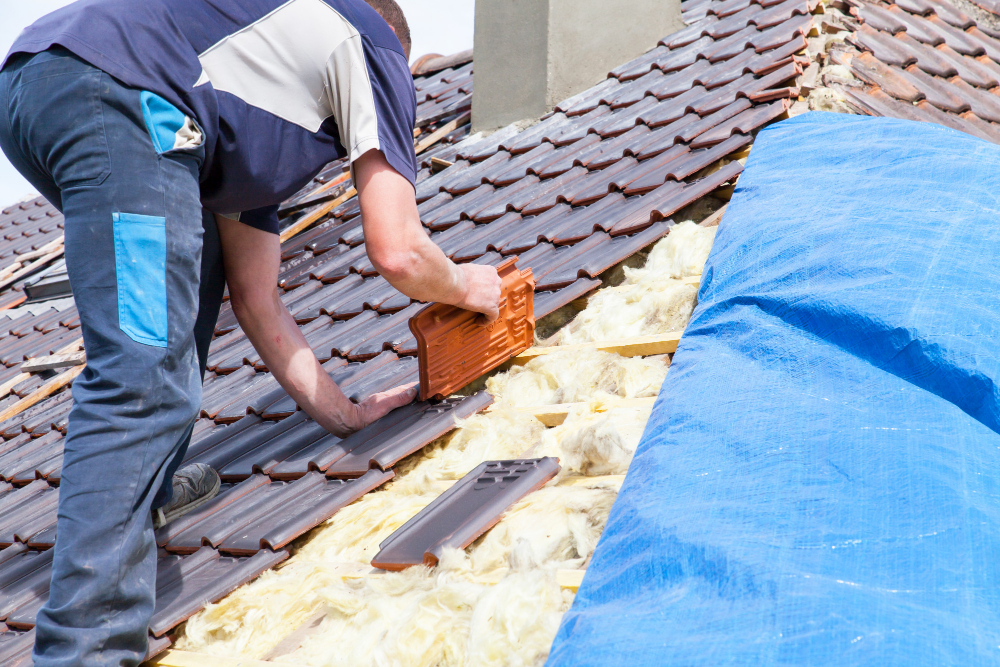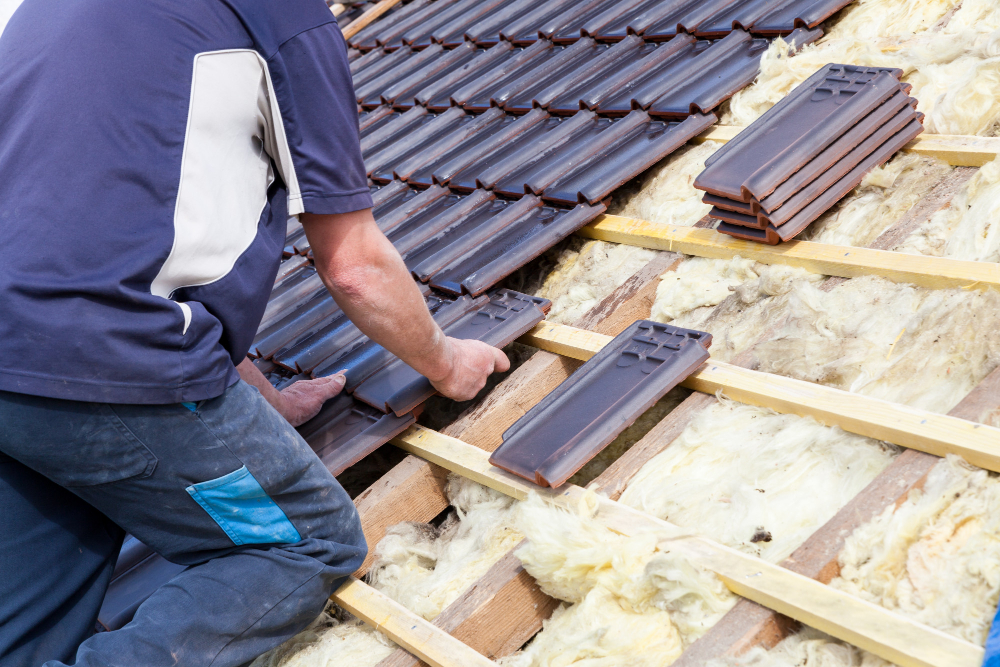Your roof is designed to safeguard you and your loved ones from varying weather conditions and natural elements. Each component of your home works together to meet your living needs, and the roof plays a vital role in shielding you from sunlight, rainwater, and extreme temperatures.
Considering the significance of their roof, most homeowners hire renowned contractors for roofing work, but a few choose to do it themselves. If you are thinking about replacing your roof independently, you will probably require a permit, which varies based on your locality.
It is key to understand the laws and rules governing home renovations in your area. This blog addresses queries about roof replacement and provides a comprehensive guide through the overall process.
Do I Need a Permit to Replace My Roof Myself?
A roof replacement permit is one of the critical documents that local authorities issue.
If you want to change the roof yourself then you need a permit to do so, because it grants homeowners the legal authority to replace their existing roofs and makes sure that their project complies with essential building codes, security protocols, and zoning regulations.
- Typically, a permit is required if you replace a significant part of your roof. If over a quarter of the roof is removed and replaced, a building notice may be necessary.
- If you are changing an existing roof, you might need building regulations approval. This is particularly true if you are changing the structure, using a new covering that poses a different fire risk, or the new covering makes the roof 15% heavier or more.
- Consult your local authority to know your area’s specific requirements, since regulations may differ.
Role of Building Permits in Roof Replacement
When you have decided to embark on a roof replacement project, it is essential to understand the role of building permits. These building permits for roof replacements in England, as per building regulations, ensure:
Structural Integrity
Building regulations ensure that the roof structure can adequately support the new roofing materials and extra loads such as snow, wind, or solar panels. This could include the assessment of the durability of the rafters, trusses, and other support elements.
Fire Safety
Building regulations regulate fire resistance to guarantee that the roof and its components adhere to the lowest fire safety standards, including the materials used and their resistance to fire spread.
Energy Efficiency
Regulations frequently necessitate improvements to thermal insulation when replacing a roof. These improvements, such as adding roof insulation or upgrading to energy-efficient materials,
Compliance with Building Standards
These regulations cover several construction aspects, such as ventilation, accessibility, and weather resistance. Obtaining a permit guarantees that the new roof meets these standards, enhancing the building’s overall quality and safety.
Legal Requirements and Potential Penalties
Failure to ensure compliance with the required building regulations can result in penalties, including fines, and could create problems when selling the property.
It is essential to have a consultation session with the local authority to ascertain whether a permit is required and to ensure compliance with all the associated regulations.
How Frequently Should Roofs Be Replaced?
The frequency of roof replacements is typically 20-30 years, with some premium materials lasting longer.
There are multiple factors that can affect the expected lifespan, including:
- Roofing Material: Different materials have varying lifespans. Asphalt shingles have a lifespan of 20 to 30 years, while slate or tile roofs can last 50 years or longer.
- Installation Quality: A poorly installed roof will probably need to be replaced sooner than a well-installed one made with quality materials.
- Climate: Extreme weather conditions, such as strong winds, heavy snow, or intense sunlight, can shorten a roof’s expected life.
- Maintenance: Regular checks and minor fixes can help extend the life of a roof by solving problems before they grow bigger.
Regular maintenance and inspections can extend a roof’s lifespan, but replacing it is usually the best course of action if it is old or severely damaged. you to generate electricity. This includes wiring the panels, installing inverters, and connecting to the grid if needed.

When Do You Need a Permit for Your Roof Replacement Project?
In England, you need approval from building regulations for a roof replacement if you are re-roofing more than 50% of the roof area or changing aspects like insulation or ventilation.
There are multiple signs you require building regulations approval, including:
Extent of Replacement: If you replace over 50% of the roof area, you’ll likely need approval.
Structural Alterations: Any changes to the roof’s structure, which may include a raise in the height or alteration in the pitch, usually require approval.
New Materials: If the new roofing material significantly changes the roof’s weight (e.g., an increase of 15% or more) or fire performance, approval may be needed.
Changes in Performance: You need to get approval if the new covering significantly improves fire performance compared to the existing one.
Insulation: If you are replacing a large portion of the roof, you may also need to upgrade the insulation to meet current regulations.
Steps for Roof Replacement Permit Approval
If your roof replacement work is over 25% of the roof, or if you want to add insulation, you need to get a permit.
Choose a Building Control Body
Choose to seek approval from your local building control department, familiar with local conditions, or hire a private approved inspector for faster service and flexible scheduling.
Submit Plans and Documentation
This typically involves detailed work plans, material specifications, and calculations to show compliance with building regulations. You might need to hire an architect or structural engineer to prepare these documents.
Application Submission
You’ll need to submit work details and confirm compliance with regulations to apply for a building notice (faster application).
Pay the Fees
Charges differ based on the building control authority and the scope of work. You can consult the chosen body for fee schedules and payment options.
Inspections
Building Control will conduct inspections at key project stages to ensure compliance with regulations on structural stability, insulation, and fire safety. If all standards are fulfilled, a completion certificate will be issued.
What Are the Roof Replacement Requirements?
Roof replacement in the USA requires adherence to building regulations, particularly concerning:
Building Regulations: If more than 25% of the roof covering is replaced, building regulations will be applied, and building control approval may be needed.
Structural Integrity: The roof’s strength and stability must be ensured after replacement.
Thermal Efficiency: Insulation is a key requirement, with minimum standards set by the government, often involving topping up to at least 270mm.
Fire Safety: Building materials must meet the USA fire safety standards.
Ventilation: Adequate airflow must be maintained within the roof space, especially in newly constructed or re-roofed properties.
Building Control: A building control officer will inspect the work, particularly towards the end of the project, to sign off on the work.
Planning Permission: While not always needed for basic roof replacement, it may be required if the roof’s height, pitch, or if over 25% of the roof is being replaced.
Listed Buildings & Conservation Areas: Special rules may apply for listed buildings and properties within conservation areas.
Cost: When budgeting for a roof replacement, factor in the cost of insulation, potential Building Regulations application fees, and inspection fees.
Contractors: Engage reputable contractors who understand building regulations and can advise on the necessary approvals.
Regularization Application: If work has started without approval, submit a regularization application to the local authority on time.
What is the Cost Breakdown of a Roof Replacement Permit?
A roof replacement permit in the USA can cost between $250 and $500. Permission costs vary by local authority and project’s scale, but they are generally included in the approval process for building regulations.
Permit Costs
Local Authority Fees: The fee for a building permit for a roof replacement is determined by local authorities, and it can vary considerably.
Building Regulations: Roof replacements must abide by building regulations, and a permit ensures adherence to these regulations, including safety standards.
Other Costs of Roof Replacement
Scaffolding: Safe access to the roof is needed, which can be possible with the scaffolding, which increases costs.
Materials: The price will be affected by the choice of roofing material (such as asphalt, slate, or tiles).
Labor: Labor costs fluctuate based on the intricacy of the roof and regional pricing.
Disposal: Removing old roofing materials comes with extra fees.
Structural Repairs: Repairing any damage to the roof structure will add to expenses.
Insulation: Upgrading insulation during replacement can lead to long-term savings on energy bills.
Ready to Replace Your Roof? Get in Touch!
At Rockford Coastal Homes, we are your trusted roofing partner, specializing in all types of roofing materials. If you are considering a roof replacement, reach out to us today. Our experienced team will assist you with obtaining permits to complete the job.
We provide roofing repair services and solar installation services across Georgia including Richmond Hill, Bloomingdale, Pooler, Rincon, and Savannah. Need any help? Feel free to contact us.


